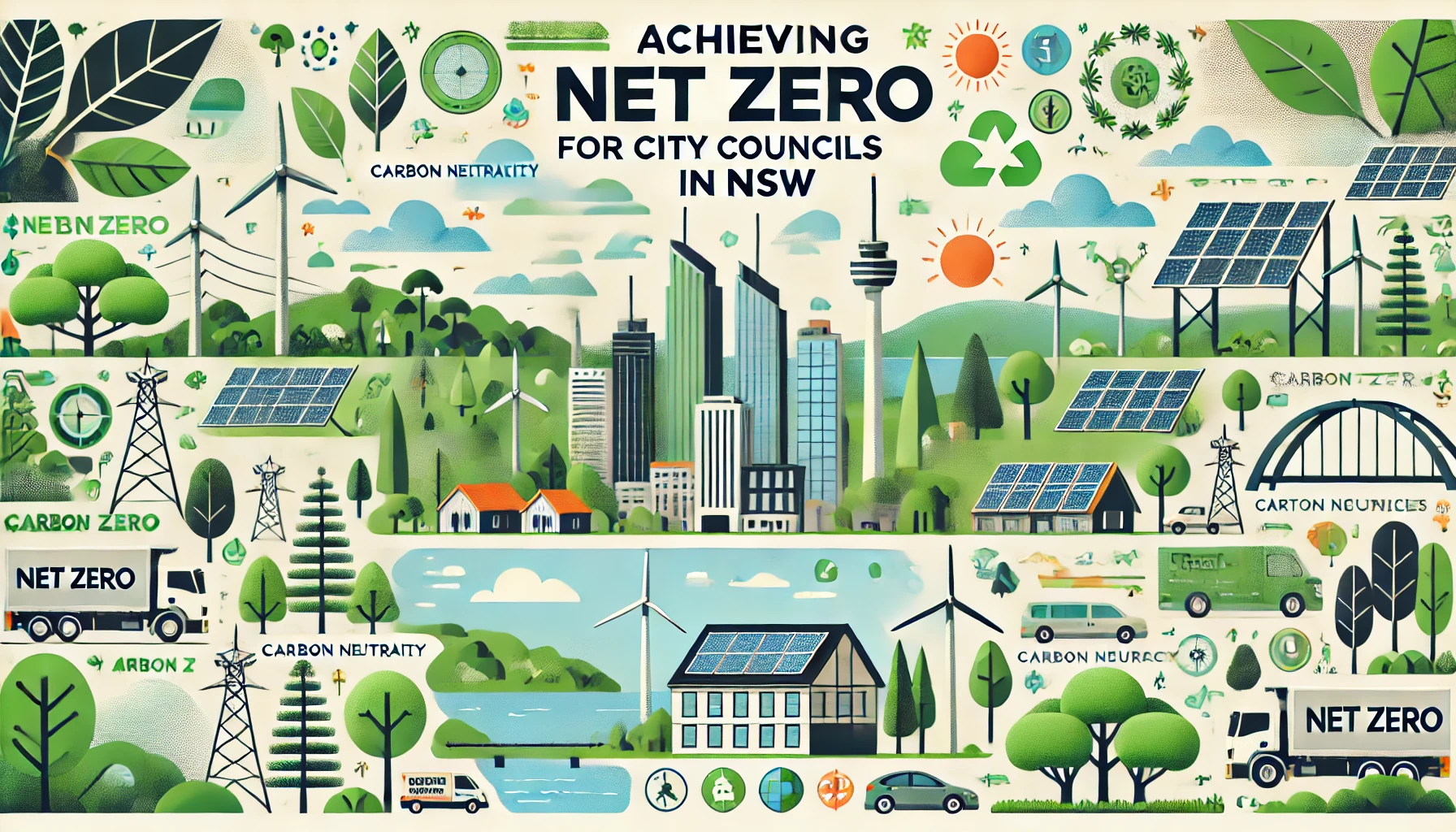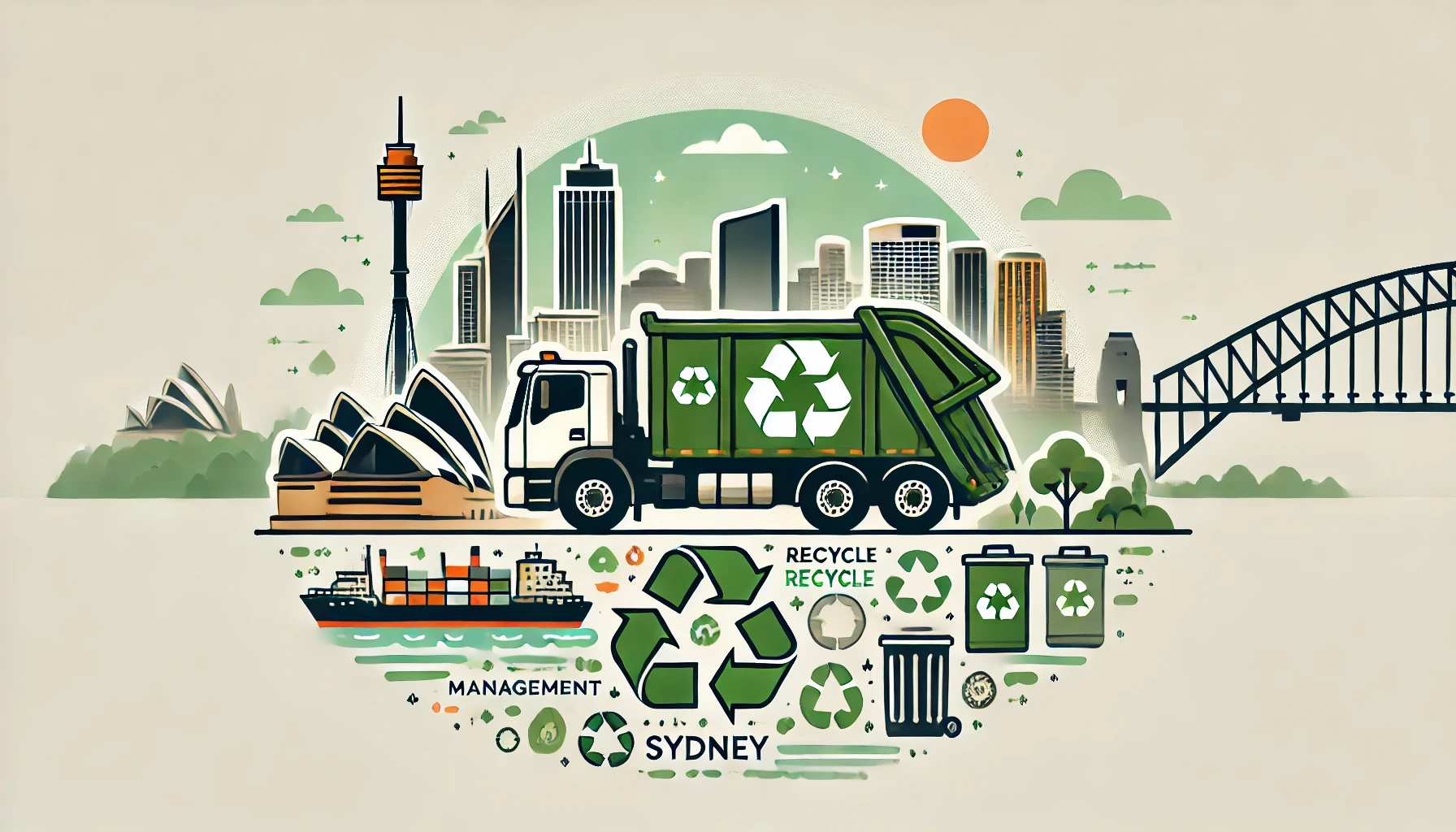Introduction
As the impacts of climate change grow, city councils across New South Wales (NSW) are stepping up to lead the way in sustainability. Achieving net zero emissions is a key milestone that demonstrates leadership in reducing carbon footprints, meeting community expectations, and supporting Australia’s climate goals. This article outlines a practical roadmap for councils to achieve net zero, combining emissions reduction strategies, community engagement, and innovation.
1. Establish a Baseline: Measure Emissions
The first step to achieving net zero is understanding current emissions. Councils need to undertake a Greenhouse Gas (GHG) Inventory to identify:
- Scope 1: Direct emissions from council-owned sources, such as fleet vehicles and natural gas heating.
- Scope 2: Indirect emissions from purchased electricity for buildings, streetlights, and other council operations.
- Scope 3: Indirect emissions from supply chains, waste management, and community activities.
Using recognised frameworks such as the National Greenhouse and Energy Reporting (NGER) system and the Climate Active Carbon Neutral Standard, councils can ensure accurate and consistent reporting.
Why It Matters: Measuring emissions provides a clear baseline, helping councils prioritise areas for immediate and long-term reductions.
2. Set Clear and Achievable Net Zero Targets
Setting ambitious yet realistic goals is crucial. Councils should align their targets with the NSW Government’s Net Zero Plan, which aims for net zero by 2050.
- Define a specific target year for achieving net zero (e.g., 2030, 2040, or 2050).
- Break down the plan into short-term and interim goals, such as a 30% emissions reduction by 2030.
Why It Matters: Clear targets drive accountability, inspire confidence in the community, and guide decision-making.
3. Develop and Implement Emissions Reduction Strategies
Councils can implement a range of practical measures to cut emissions across operations and infrastructure:
a. Energy Efficiency Improvements
- Upgrade council facilities with energy-efficient lighting (e.g., LED streetlights) and heating, ventilation, and air conditioning (HVAC) systems.
- Install smart sensors and systems to monitor and optimise energy use.
b. Transition to Renewable Energy
- Source 100% renewable energy through Power Purchase Agreements (PPAs).
- Install solar PV systems on council buildings, libraries, and community facilities.
c. Fleet Electrification
- Transition council vehicles to electric vehicles (EVs).
- Invest in EV charging infrastructure for both council operations and the broader community.
d. Sustainable Waste Management
- Roll out Food Organics and Garden Organics (FOGO) programs to divert organic waste from landfill.
- Promote circular economy initiatives to reduce waste and maximise recycling.
e. Green Infrastructure
- Expand urban greening programs, including tree planting and creating green spaces to sequester carbon and cool urban areas.
- Develop energy-efficient building standards for new council projects.
Why It Matters: Implementing these strategies reduces emissions, optimises resources, and delivers measurable environmental and financial benefits.
4. Address Residual Emissions with Carbon Offsets
Despite robust emissions reduction efforts, some residual emissions may remain. Councils can offset these emissions by investing in high-quality, verified carbon credits that meet integrity standards under the Climate Active Carbon Neutral Standard.
| Credit Type | Issuing Body | Project Types |
|---|---|---|
| Australian Carbon Credit Units (ACCUs) | Clean Energy Regulator (Australia) | Reforestation, waste management |
| Certified Emission Reductions (CERs) | UNFCCC (Clean Development Mechanism) | Renewable energy projects |
| Verified Carbon Units (VCUs) | Verified Carbon Standard (Verra) | Forest conservation, reforestation |
| Gold Standard Credits (GS VERs) | Gold Standard | Energy efficiency, clean cooking |
Example: A council can purchase ACCUs from a reforestation project in NSW, which restores native forests while offsetting emissions and enhancing biodiversity.
Why It Matters: Carbon offsets provide a credible way to achieve net zero while supporting projects that benefit the environment and local communities.
5. Engage the Community and Stakeholders
Achieving net zero requires collective action. Councils can drive community-wide participation through:
- Educational Programs: Host workshops and campaigns to help residents and businesses reduce their emissions.
- Incentives: Offer rebates for solar panel installations, electric vehicle adoption, and waste reduction initiatives.
- Partnerships: Collaborate with universities, renewable energy providers, and businesses to leverage expertise and funding.
Why It Matters: Community engagement fosters shared responsibility and builds momentum for achieving sustainability goals.
6. Monitor, Report, and Continuously Improve
Tracking progress is essential to ensure councils remain on track:
- Monitor: Use tools like emissions accounting software to measure reductions and identify gaps.
- Report: Publish annual sustainability reports for transparency and accountability.
- Adjust: Review strategies regularly and adopt new technologies or practices as they emerge.
Why It Matters: Ongoing monitoring and reporting ensure that councils stay accountable and adapt to changing circumstances.
7. Access Funding and Resources
Securing funding is critical to delivering net zero initiatives:
- NSW Government Grants: Apply for funding programs like the Waste Less, Recycle More or Environmental Education grants program.
- Federal Government Incentives: Leverage clean energy programs and funding opportunities.
- Green Finance: Consider options such as green bonds and partnerships with private investors.
Why It Matters: Accessing funding ensures that net-zero projects are cost-effective and do not strain ratepayer budgets.
Conclusion
Achieving net zero emissions for a city council in NSW is an ambitious yet achievable goal. By implementing a structured approach that includes emissions measurement, renewable energy adoption, fleet electrification, waste management, and community engagement, councils can significantly reduce their carbon footprint.
Combining these efforts with high-quality carbon offsets ensures compliance with climate standards while delivering long-term environmental, economic, and social benefits.
Through leadership, collaboration, and innovation, city councils in NSW can pave the way for a sustainable, net zero future—setting an example for communities and organisations alike.


